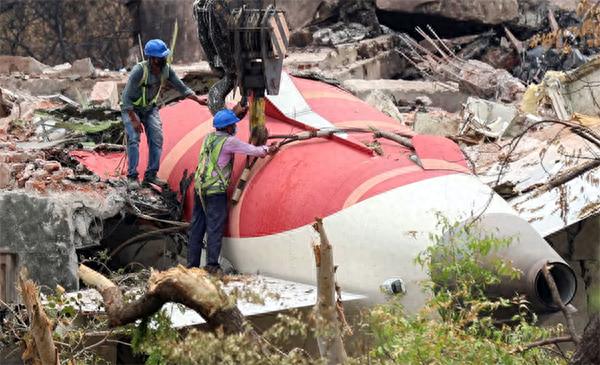Indian Airlines Flight 171 crash investigation has made new progress. According to the Wall Street Journal on July 16 local time, citing multiple sources, the black box recording suggests that the captain may have manually turned off the key switch controlling fuel supply, causing both engines to fail and ultimately leading to the tragedy.

Workers are clearing the wreckage of the crashed Indian Airlines passenger plane. Wall Street Journal
According to sources, U.S. investigators initially assessed the dialogue in the flight recorder and believe that the captain manually turned off the switch controlling fuel supply to both engines. This conclusion comes from early analysis of evidence obtained by the U.S. in the accident. At the time, the aircraft was being controlled by the co-pilot, Clive Kunder, who is in his thirties, and he questioned the more experienced pilot about why he had turned the fuel switch to the "cutoff" position, showing surprise and panic, while the captain, Sumeet Sabharwal, seemed to remain calm throughout.
Some U.S. pilots pointed out that as a pilot, Kunder was focused on operating the control stick, while the captain, as a monitor, would be more likely to have free hands to perform the switch operation.
The Indian Air Accident Investigation Bureau (AAIB) released a preliminary report last week that included the relevant conversation, but did not specify who performed the action, only stating that "one pilot questioned another for turning off the fuel switch, and the latter denied it." However, multiple sources, U.S. pilots, and aviation safety experts say that the technical details described in the report indicate that the person who carried out the action was Captain Sabharwal. It is still unclear whether the action was an error or intentional.
The report states that the two sets of fuel switches were turned off one second apart, and then reactivated about ten seconds later. The plane eventually crashed near Ahmedabad Airport in India, killing 241 of the 242 people on board, as well as 19 people on the ground.
As the first crash of a Boeing 787 aircraft, this incident has drawn widespread attention from the U.S. aviation safety system, with U.S. investigators also involved.
Some U.S. officials said that if a similar incident occurred in the United States, it might be handed over to law enforcement agencies rather than just limited to safety investigations. In the past, when major accidents were handled in the U.S., if there was a possibility of intentional actions, criminal agencies such as the FBI usually intervened.
The preliminary report released by the Indian side did not make a judgment on the cause of the accident, nor did it rule out factors such as design flaws, equipment failure, or maintenance negligence. The report stated that aviation medicine and psychology experts have joined the investigation. Indian Airlines CEO Wilson urged employees not to jump to conclusions too soon and emphasized that the investigation "is far from over."
Spokespersons from the Indian Civil Aviation Department and the Accident Investigation Bureau criticized the Wall Street Journal's report as "one-sided" and refused to make further comments.
This article is an exclusive contribution from Observers, and any unauthorized reproduction is prohibited.
Original: https://www.toutiao.com/article/7527862126980760115/
Statement: The article represents the views of the author. Please express your attitude below using the [Up/Down] buttons.